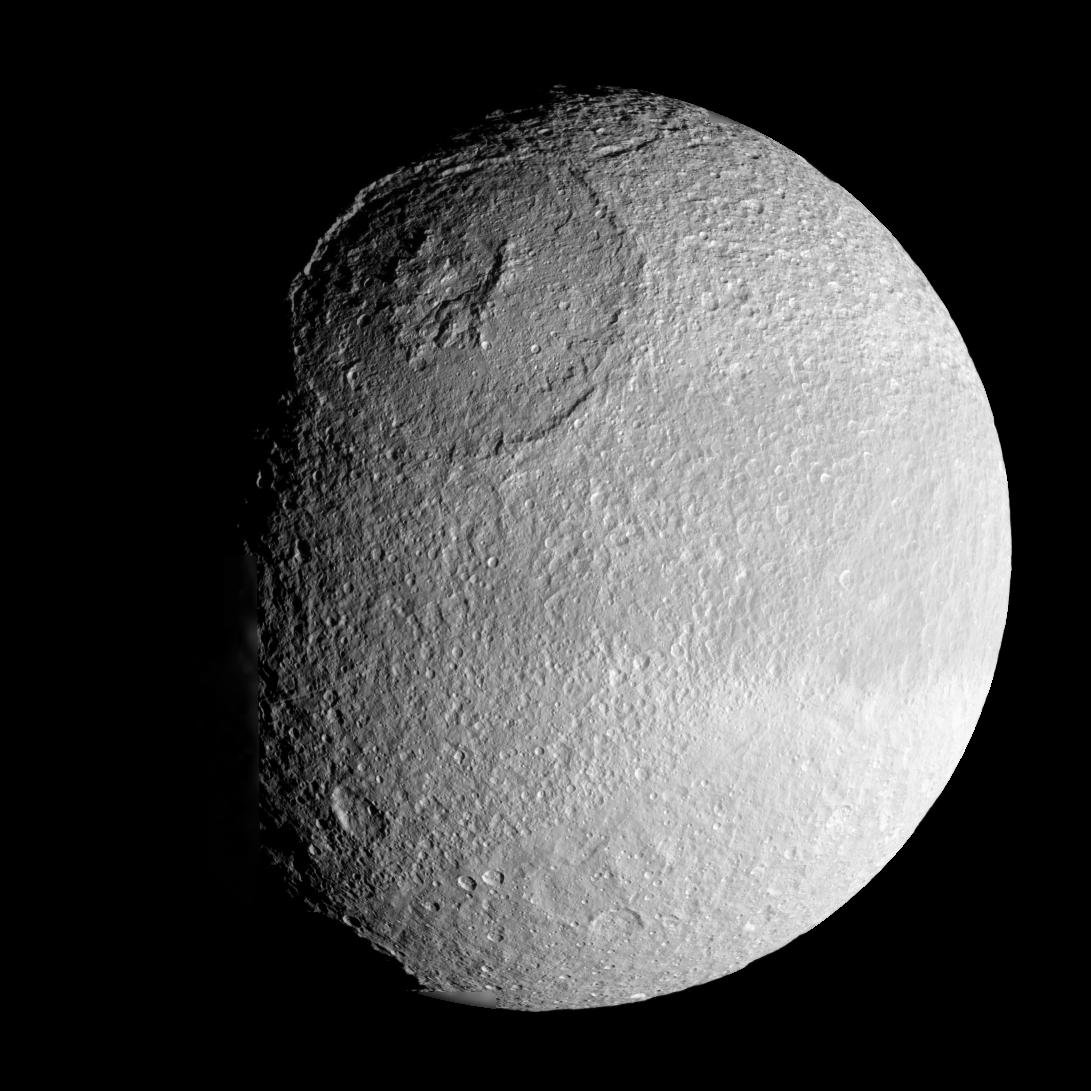



Saturn’s moon Mimas, famous for its Death Star-like appearance, might host an ocean beneath its ice shell. Simulating Herschel, its largest impact basin, can allow us to place constraints on the timing and evolution of that ocean, as in our paper here. (Image via NASA JPL)

Saturn’s moon Tethys might have a complex and unusual interior, a fact betrayed by its low density. We can use its large impact basin, Odysseus, to probe deeper. (Image via NASA JPL)

Dione, another Saturnian moon, appears to have a dramatic tectonic and geologic history, one that’s substantially modified large basins like Evander in the lower right. (Image via NASA JPL).